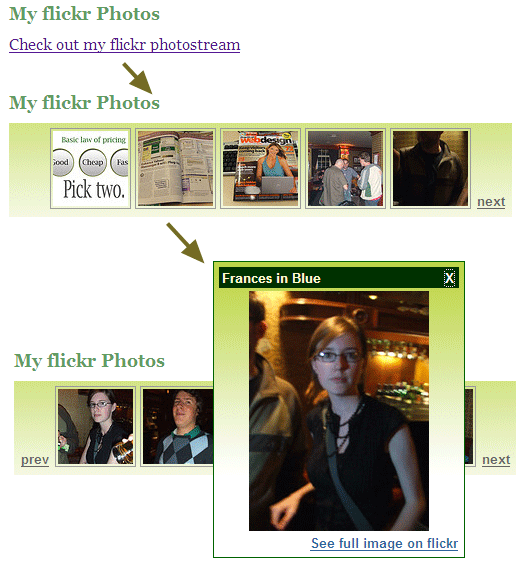No more dead links – My first go at a WordPress Plugin
Saturday, September 9th, 2006I’ve just played with an idea for a wordpress plugin. If you [link:http://www.wait-till-i.com/stuff/noMoreDeadLinks.zip,download this plugin] and install it you can use the following syntax for links in your posts:
[xlink:url,text,xfn data]
The plugin will then check if the url exists and create a link if it does or otherwise add a DEL element with a class called “brokenlink”. The xfn data is optional and there is no testing as of yet. In order to make them work you need to use the [link:http://microformats.org/wiki/xfn,valid XFN data] values.
Tests:
- [link:http://icant.co.uk,My Articles,me] (http://icant.co.uk – me XFN)
- [link:http://onlinetools.org,My scripts,me] (http://onlinetools.org – me XFN)
- [link:http://www.allinthehead.com,Drew McLellan,friend met co-worker colleague] (http://allinthehead – friend met co-worker colleague XFN)
- [link:http://www.offlinetools.org,Offlinetools.org] (should be broken)
My inspiration
The inspiration for this was Tom Croucher’s talk at barcamp London about the self healing web. [link:http://www.kid666.com/blog/?p=34,Read more about it on his blog].
